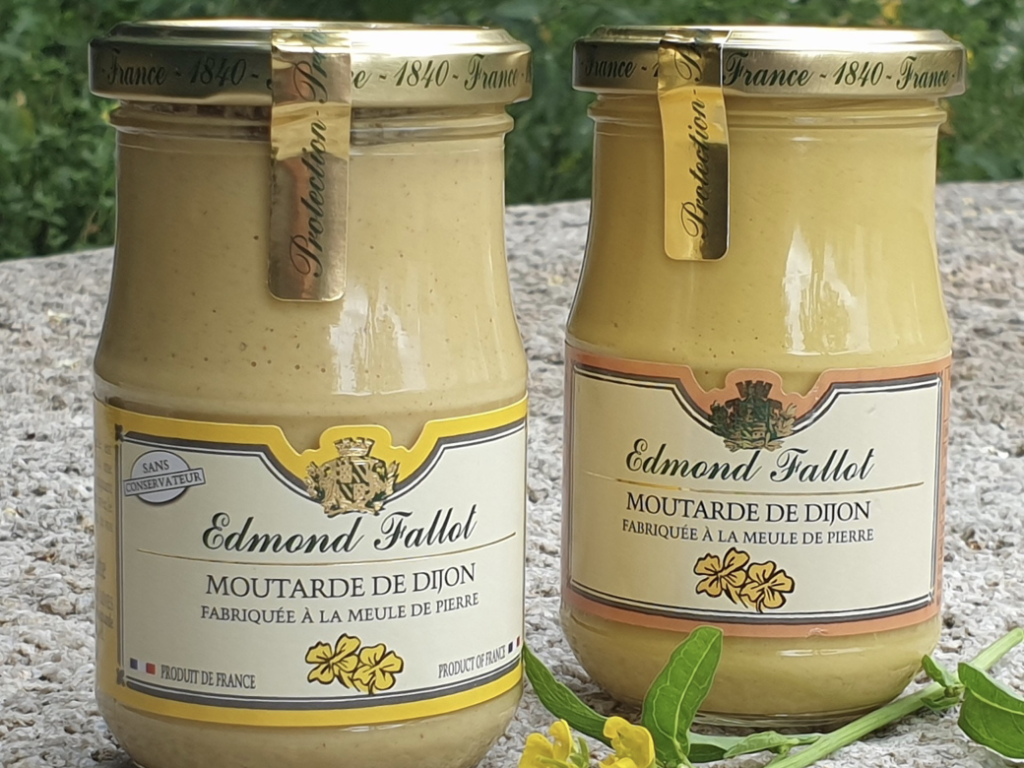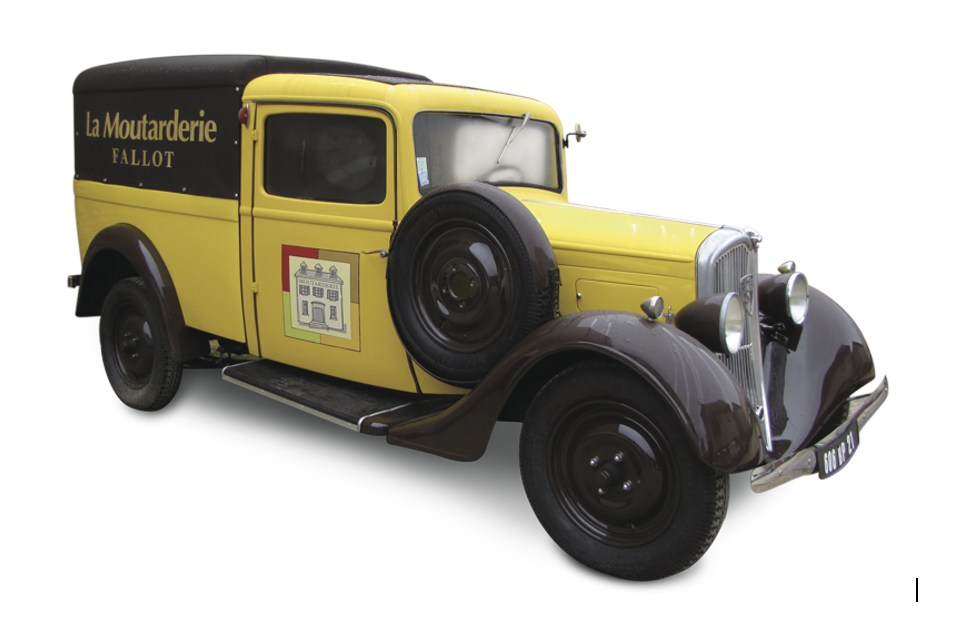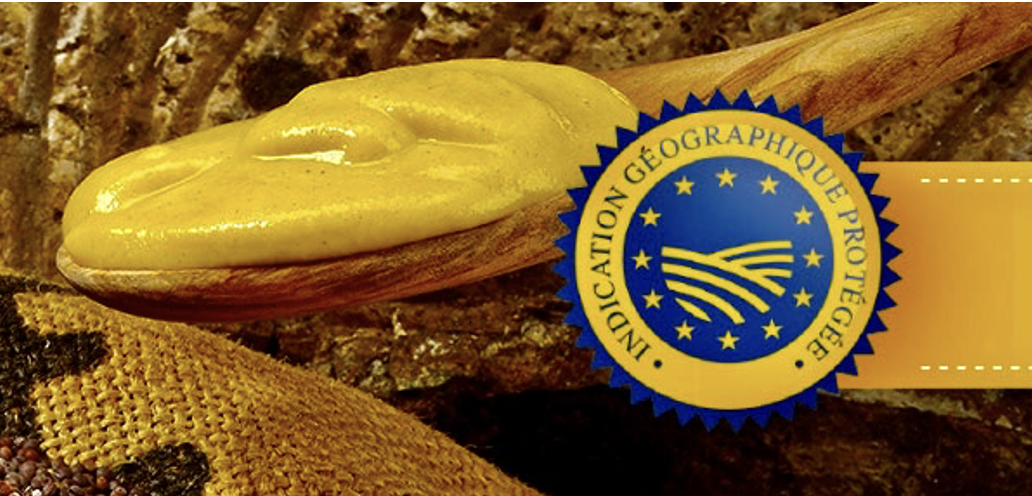Is This the Best Mustard in the World?

When people think of French mustard, they usually think of Dijon, the most popular mustard in the world. In the United States, they probably think of Grey Poupon, remembering the funny ads that once made this brand of Dijon mustard a luxury item.
There are other mustards in France, of course, like moutarde de Meaux, but Dijon is by far the most popular. It comes in two basic varieties: the smooth yellow kind and the darker old-fashioned version, where the husks of crushed mustard seeds remain. Some companies make an extra-spicy version of Dijon mustard, like Maille’s Amora brand. But most of the variety comes from what producers add. Would you like your Dijon mustard with truffles, or tarragon, or honey? Whatever your tastes, you can probably find a Dijon mustard that tickles your fancy.
A Long History
Mustard in France goes back a long way. The Romans brought it with them thousands of years ago, and in Burgundy, where the city of Dijon is located, the first decree formalizing mustard manufacturing dates to 1390. For centuries it was a local business, with small producers scattered throughout Burgundy, using locally-grown mustard seeds and serving the local population.
But as Dijon mustard’s fame spread, it became big business. Today, mustard-making has largely moved out of Burgundy. Nearly all mustard seeds come from Canada and large corporations like Kraft and Unilever dominate the industry, with factories around the world.
Surprisingly, Dijon mustard no longer has to come from Dijon! As long as someone uses the formula of crushed mustard seeds, vinegar, water, and salt, they can call their product Dijon mustard. Unlike something like Champagne, which can be made only in the Champagne region following strict rules, Dijon mustard has become a commodity.
But there’s still one firm that keeps the old traditions alive.
Keeping Traditions Alive

Moutarderie Fallot has been producing mustard in Beaune since 1840, and today is the last independent mustard-maker in Burgundy. They use only seeds that have been grown in Burgundy, and they grind them the old way—slowly, with a big round millstone. Modern factories grind the seeds quickly, which generates heat and damages their delicate flavors. Fallot’s dedication to artisanal sources and methods is what makes their mustard perhaps the best in the world.

Fallot’s approach is so well-regarded that the French government has awarded them with the coveted designation Entreprise de Patrimoine Vivant (Living Heritage Company.) And they’ve created a special version of Dijon mustard, called moutarde de Bourgogne, that can only be made with locally-grown mustard seeds and uses white Burgundy wine instead of vinegar. This is the mustard that true connoisseurs seek out, and the French government has given it its special Protected Geographical Indication (IGP) designation.

Take a Tour
You can tour the Fallot facility in Beaune, choosing one of two tours. On the ‘Discovery Tour’, you will learn all about the art and traditions of mustard making in Burgundy, while on the ‘Sensational Experiences Tour’, you will learn how mustard goes from seed to table. On both tours, you get to taste different mustards, and even make your own! Each tour is about an hour long and is available in either English or French. The price is €10 and reservations are recommended. There is also a well-stocked boutique and a tasting bar where you can try any of the many different flavors on offer.

It once was said that to be a true lady or gentleman in France, you had to first learn French wines, then cheeses, then mustard. After mastering wines and cheeses, what better place to start your mustard education than with the delicious offerings of the Moutarderie Fallot?
Which is your favourite French mustard? Comments below, please.
Image Credits:
All images are from the Moutarderie Fallot website, Facebook page or Instagram
Your subscription to the (free or paid) ‘le Bulletin’ will be gratefully received, and will help me continue to build ‘le Bulletin’ - the weekly newsletter of MyFrenchLife.org Magazine to be even more rich. Merci Mille Fois







Protected Geographical Indication is that like having only champaign if it is from the Champaign region?
also i loved those grey Poupon commercials as a kid. we would run around and say that to other kids at school.